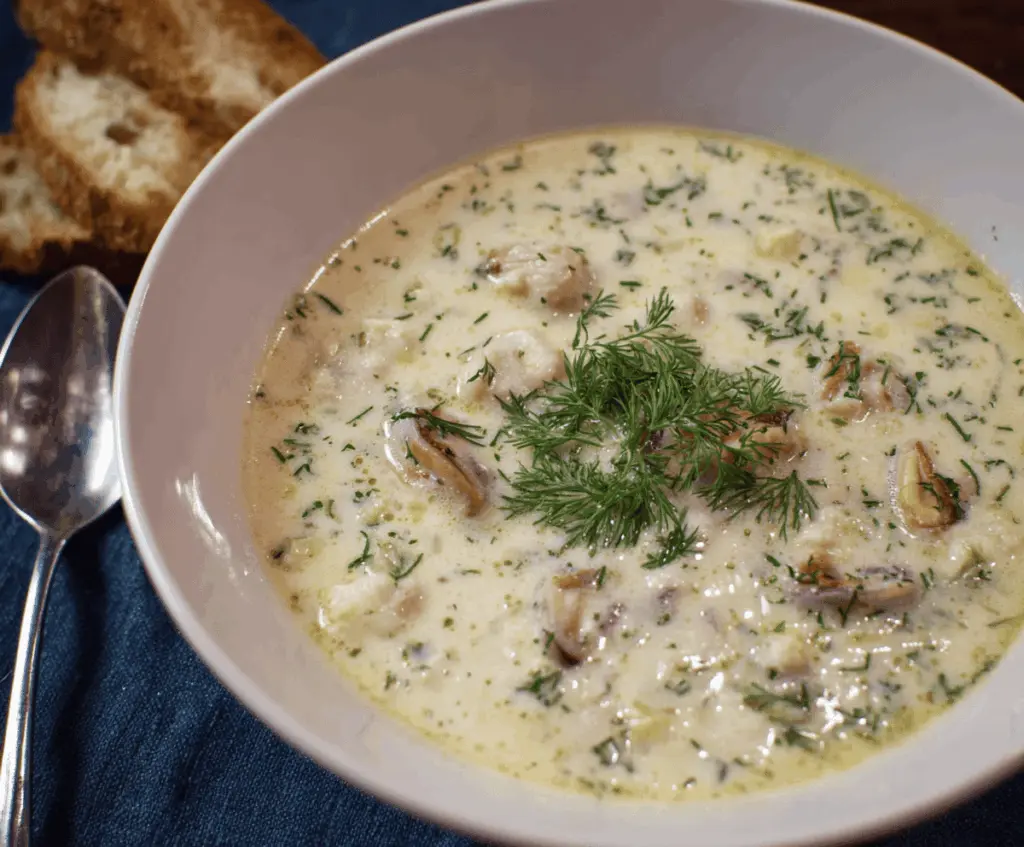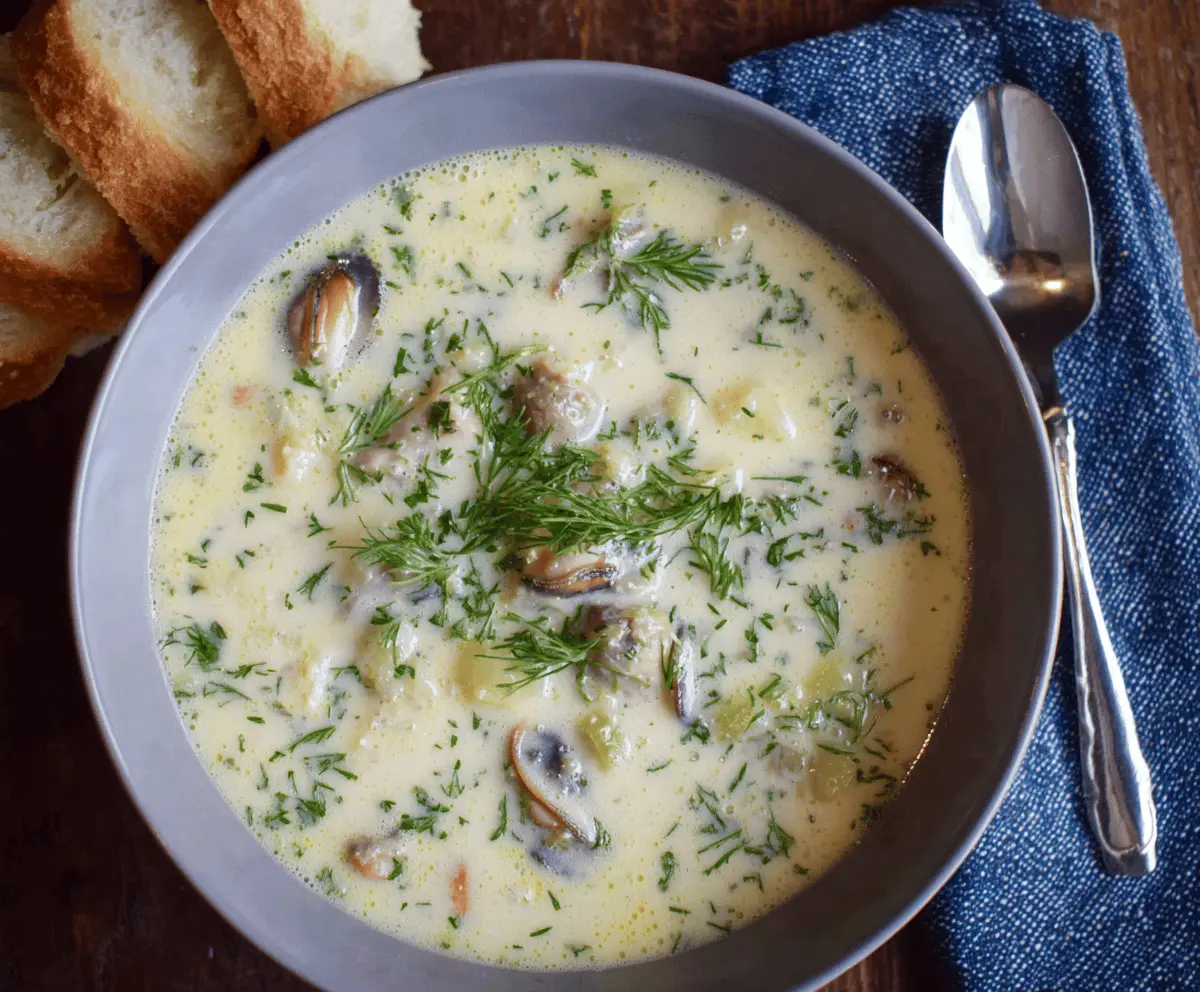
Oyster Stew Recipe
Oyster Stew is a classic comfort dish that’s simple, creamy, and full of the fresh, briny flavor of oysters. This stew usually features tender oysters gently cooked in a smooth,…
Tip: save now, cook later.Oyster Stew is a classic comfort dish that’s simple, creamy, and full of the fresh, briny flavor of oysters. This stew usually features tender oysters gently cooked in a smooth, buttery broth with milk or cream, seasoned just right with a touch of pepper and a sprinkle of fresh herbs. It’s a warm bowl that’s perfect for chilly evenings or whenever you’re craving something cozy and satisfying.
I love making oyster stew when I want a meal that feels fancy but actually comes together quickly and easily. One of my favorite things about this stew is how the oysters stay soft and delicate in the broth, making every spoonful a little treat. A tip I’ve picked up is to add the oysters at the last moment to keep their texture just right—it really makes a difference!
I usually serve oyster stew with some crusty bread or soft crackers on the side for dipping. It’s a nice way to enjoy the creamy broth and the oysters together. Whenever I make this recipe, it feels like sharing a bit of tradition and warmth—something that always brings good memories and happy smiles to the table.
Key Ingredients & Substitutions
Fresh Oysters: The star of this stew! Fresh oysters bring that natural briny flavor. If fresh aren’t available, try high-quality canned oysters, but expect a milder taste and softer texture.
Butter: Unsalted butter adds richness and helps soften the onions. You can use olive oil for a lighter option, though butter gives the best creamy flavor.
Milk & Cream: Whole milk and heavy cream create the stew’s smooth base. For a lighter stew, swap heavy cream with half-and-half or use all milk, but the texture will be thinner.
Fresh Herbs: Parsley and dill brighten the stew nicely. If dill isn’t your favorite, fresh thyme or chives are nice alternatives.
How Do I Keep the Oysters Tender and Not Overcooked?
Oysters cook quickly and can become rubbery if overdone. To get them just right:
- Make sure the milk mixture is gently simmering, not boiling.
- Add oysters last and cook for only 3 to 5 minutes until their edges curl slightly.
- Remove the stew from heat immediately after cooking oysters to avoid further cooking.
This approach keeps the oysters soft and tender, letting their flavor shine in the creamy broth.
Equipment You’ll Need
- Large saucepan – perfect for gently cooking onions and simmering the stew without boiling.
- Fine mesh sieve – to strain oyster liquor and remove any grit for a smooth broth.
- Wooden spoon – ideal for stirring without scratching your pan.
- Ladle – makes serving the creamy stew easy and neat.
Flavor Variations & Add-Ins
- Add diced potatoes or corn for extra heartiness and texture.
- Swap fresh oysters for clams or mussels for a slightly different shellfish taste.
- Stir in a pinch of smoked paprika for a gentle smoky twist.
- Use fresh thyme instead of dill if you prefer a woodsy herb flavor.
How to Make Oyster Stew?
Ingredients You’ll Need:
- 2 pints fresh shucked oysters, with their liquor (juice)
- 4 tablespoons unsalted butter
- 1 small onion, finely chopped
- 2 cups whole milk
- 1 cup heavy cream
- 2 tablespoons fresh parsley, finely chopped
- 1 tablespoon fresh dill, finely chopped, plus extra sprigs for garnish
- Salt and freshly ground black pepper to taste
- Optional: pinch of cayenne pepper or hot sauce
- Crusty bread or oyster crackers, for serving
How Much Time Will You Need?
This oyster stew comes together quickly! It takes about 10 minutes to prep the ingredients and roughly 15 minutes to cook everything gently. All in all, you’ll have a warm, delicious stew ready in about 25 minutes.
Step-by-Step Instructions:
1. Prepare the Oysters and Broth:
Drain the oysters, keeping the oyster liquor in a bowl. Strain the liquor through a fine mesh sieve to remove any grit. Set aside for later.
2. Cook the Onion:
In a large saucepan, melt the butter over medium heat. Add the finely chopped onion and cook, stirring occasionally, until the onion is soft and translucent—about 5 minutes.
3. Make the Creamy Base:
Add the reserved oyster liquor to the pan, then pour in the milk and cream. Heat gently over medium-low heat, stirring occasionally, until the mixture is just simmering. Avoid boiling to keep the milk from curdling.
4. Add the Oysters:
Carefully add the oysters to the warm cream mixture. Cook gently for 3 to 5 minutes, until the oysters curl at the edges and are cooked through. Take care not to overcook, as oysters can get tough quickly.
5. Season and Garnish:
Stir in the chopped parsley and dill. Season the stew with salt, freshly ground black pepper, and if you like, a pinch of cayenne pepper or a few drops of hot sauce. Taste and adjust the seasoning to your preference. Remove from heat.
6. Serve and Enjoy:
Ladle the oyster stew into bowls. Garnish each serving with a sprig of fresh dill. Serve immediately alongside crusty bread or oyster crackers for dipping.
Can I Use Frozen Oysters for This Stew?
Yes, you can use frozen oysters, but make sure to thaw them completely in the refrigerator before cooking. Drain any excess liquid to avoid watering down the stew.
How Should I Store Leftover Oyster Stew?
Store leftovers in an airtight container in the fridge for up to 2 days. Reheat gently on the stove over low heat to avoid curdling the cream.
Can I Make Oyster Stew Ahead of Time?
It’s best to add the oysters just before serving because they cook quickly. You can prepare the base and onion mixture in advance, then add oysters and reheat gently when ready to serve.
What Can I Serve with Oyster Stew?
Crusty bread or oyster crackers are classic choices for dipping. You can also serve it with a light green salad to balance the richness.

